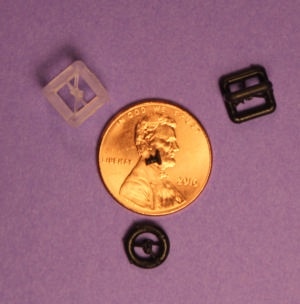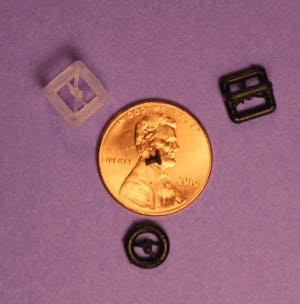3D Printing Used to Create Prosthetics to Restore Hearing Loss
Researchers have used 3D printing to create breakthrough prosthetics that could help restore hearing loss using a surgical procedure that until now has been largely unsuccessful.
February 1, 2018

Researchers have used 3D printing to create breakthrough prosthetics that could help restore hearing loss for those whose hearing is damaged using a surgical procedure that until now has been largely unsuccessful.
A team of researchers led by Jeffrey Hirsch, a physician and assistant professor of radiology at the University of Maryland School of Medicine in Baltimore, used CT scans together with 3D printing to create accurate, custom-designed prosthetic replacements for damaged parts of the middle ear.
The research has great potential to improve surgery currently done to correct damage done to three tiny bones in the middle of the ear called ossicles, but which often fails because prosthetic implants are not correctly sized, Hirsch said.
Hearing works partly through the transmission of vibrations from the ear drum to the cochlea, the sensory organ of hearing, via the ossicles. Ossicular conductive hearing loss occurs when these bones are damaged, such as from trauma or infection.
|
The photo shows the size comparison between a 3D printed prosthesis implant and a penny. Researchers developed the implants using CT scans and 3D printing for use in surgery—until now largely unsuccessful--that can help restore hearing loss for middle-ear-damaged patients. (Source: University of Maryland School of Medicine) |
Surgeons can fix this kind of hearing loss using surgical reconstruction with prostheses made from stainless steel struts and ceramic cups; these generally are tailored for each patient in the operating room.
"The ossicles are very small structures, and one reason the surgery has a high failure rate is thought to be due to incorrect sizing of the prostheses," Hirsch explained. "If you could custom-design a prosthesis with a more exact fit, then the procedure should have a higher rate of success."
Researchers have done just that by studying how to use 3D printing to create customized prostheses for patients undergoing this surgery. The method already has been successful for developing prosthetics for joint replacement and facial-reconstruction surgery.
To create the prostheses, the team used CT scans to image the middle linking bone of the ossicular chain using bone used taken from three human cadavers. They then used a desktop commercial 3D printer to create prostheses from a resin that hardens when exposed to ultraviolet laser light. The prostheses—each of which had unique measurements—were used to restore continuity for each of the middle ears.
The team then asked four surgeons to perform procedures to insert a prosthesis into each middle ear, without knowing from and for which each was designed. The surgeons were then asked to match each prosthesis to its correct source, with all four successfully matching the prosthesis model to its intended temporal bone—the bone containing the middle and inner parts of the ear.
As the chances of such results happening randomly are 1 in 1,296, the study proves that the process can be used to reproduce accurately even tiny human parts for prosthetic purposes, detecting significant anatomic differences in human middle-ear ossicles, Hirsch said.
Moreover, surgeons can detect these differences, which should not only increase the likelihood of a proper fit, but also decrease surgical time, he said.
This study highlights the core strength of 3D printing — the ability to very accurately reproduce anatomic relationships in space to a sub-millimeter level, he said. "With these models, it's almost a snap fit."
Researchers now plan to continue their work to create prostheses out of biocompatible materials, as well as examine a different approach that would combine the 3D-printed prostheses with stem cells, Hirsch added.
"Instead of making the middle ear prosthesis solid, you could perforate it to be a lattice that allows stem cells to grow onto it," he explained. "The stem cells would mature into bone and become a permanent fix for patients with hearing loss."
Elizabeth Montalbano is a freelance writer who has written about technology and culture for more than 15 years.
About the Author(s)
You May Also Like




